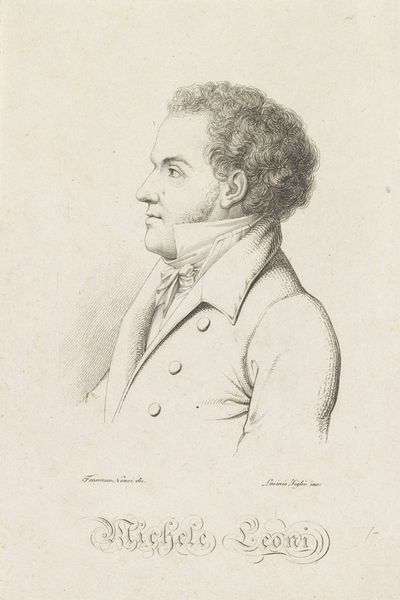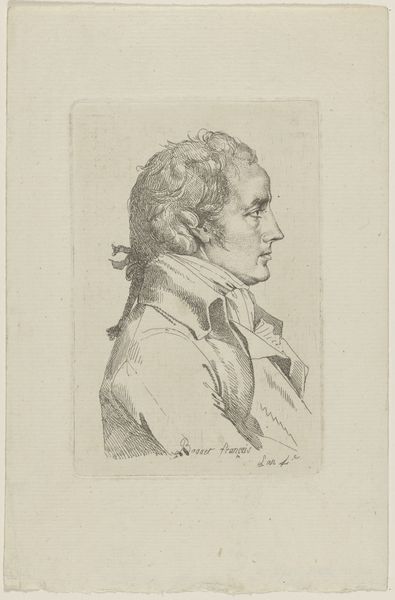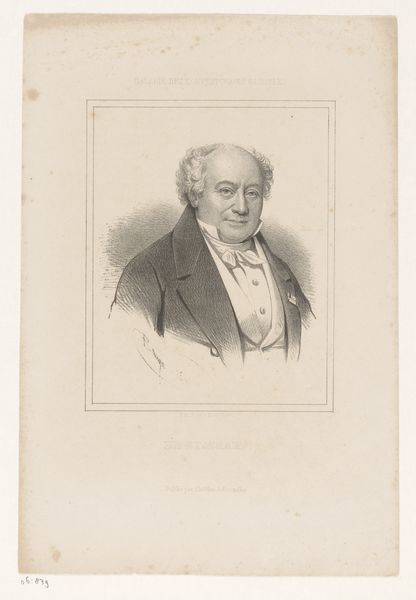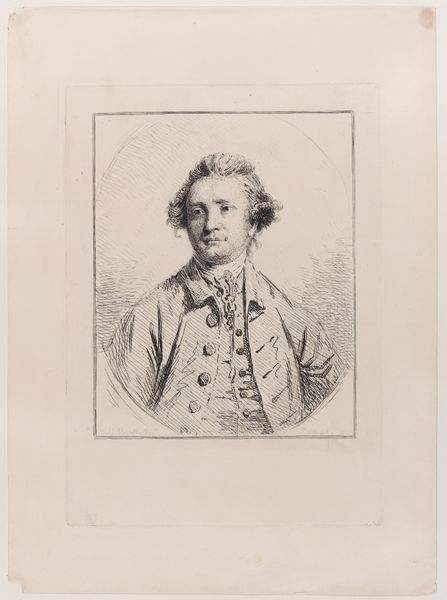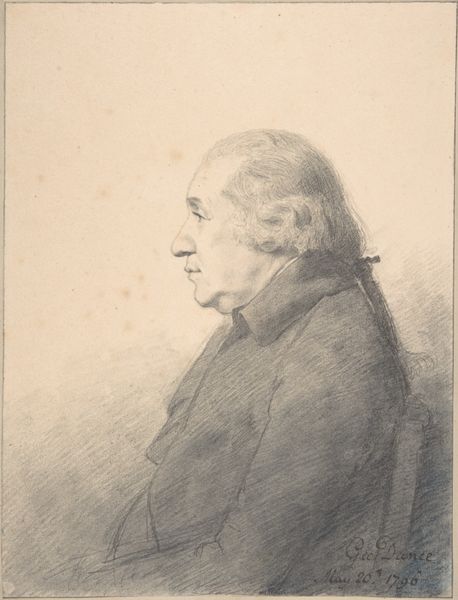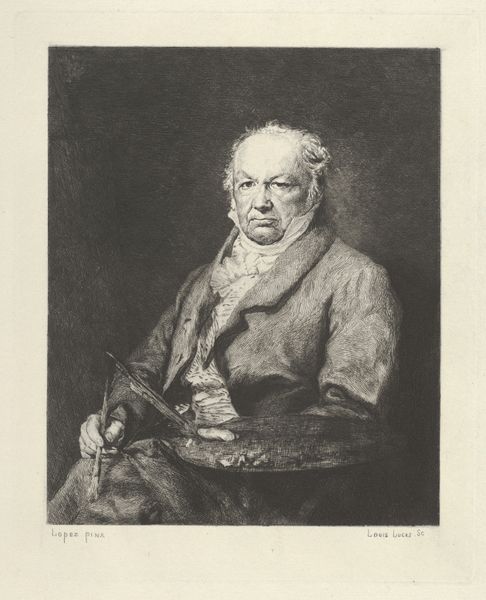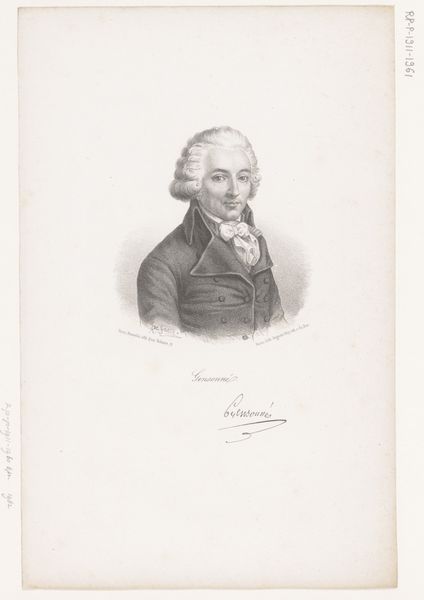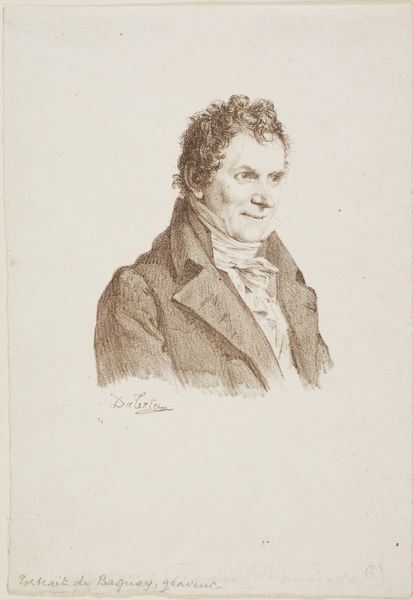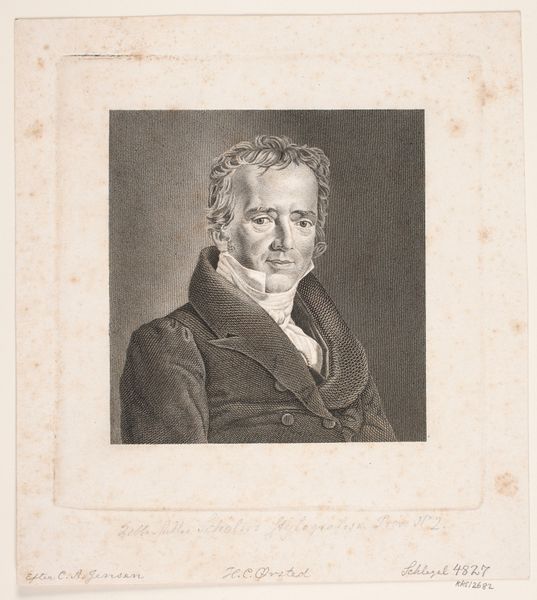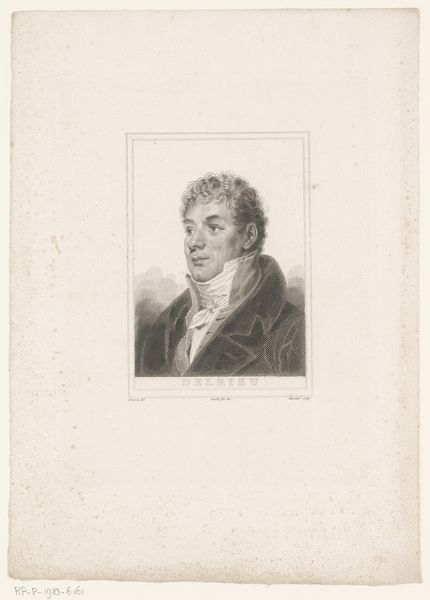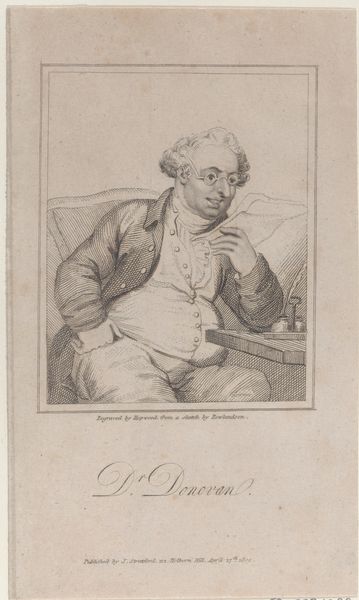
drawing, lithograph, print, paper, pencil
#
portrait
#
drawing
#
neoclacissism
#
lithograph
# print
#
paper
#
pencil drawing
#
romanticism
#
pencil
Dimensions: 165 × 140 mm (image); 209 × 149 mm (sheet)
Copyright: Public Domain
Curator: Here we have L. F. Laurent’s 1816 lithograph, “Portrait of Vivant-Denon,” a drawing rendered in pencil on paper currently held in the collection of the Art Institute of Chicago. Editor: It’s quite delicate, isn’t it? There's a wonderful, almost restless energy in the cross-hatching. It really captures a sense of Denon’s character. Curator: Absolutely. Vivant-Denon was a fascinating figure himself. A diplomat, writer, and artist, he was also Napoleon's cultural advisor, instrumental in establishing the Louvre Museum as we know it today and in shaping French cultural policy during a turbulent era. Editor: The rendering of the curls in his hair and the almost quizzical lift of his eyebrow give so much life to the drawing. I’m particularly drawn to the contrasting textures of the jacket against the intricately tied cravat at his neck. Curator: Consider the historical context. This portrait encapsulates the Neoclassical and Romantic impulses of the period. Denon embodied the Enlightenment ideal of the learned individual, actively participating in shaping not only artistic production but also the perception of art and culture within French society. The print offered wider distribution and greater exposure of Denon to a broader audience. Editor: It's interesting how the stark simplicity of the medium forces us to focus on the interplay of light and shadow. Laurent masterfully uses line weight to create depth and volume. It makes for an incredibly engaging study of a man's character. Curator: This work reminds us of the power of portraits within political and cultural spheres. They communicate messages, shape public perception, and leave lasting visual legacies. Editor: I'm leaving this work with a deeper appreciation for the nuances that can be captured with the humblest of materials, line and paper, expertly applied. Curator: And I'm leaving it thinking of how crucial individuals are in forming our cultural institutions and how portraits document the key influencers of cultural policy.
Comments
No comments
Be the first to comment and join the conversation on the ultimate creative platform.
